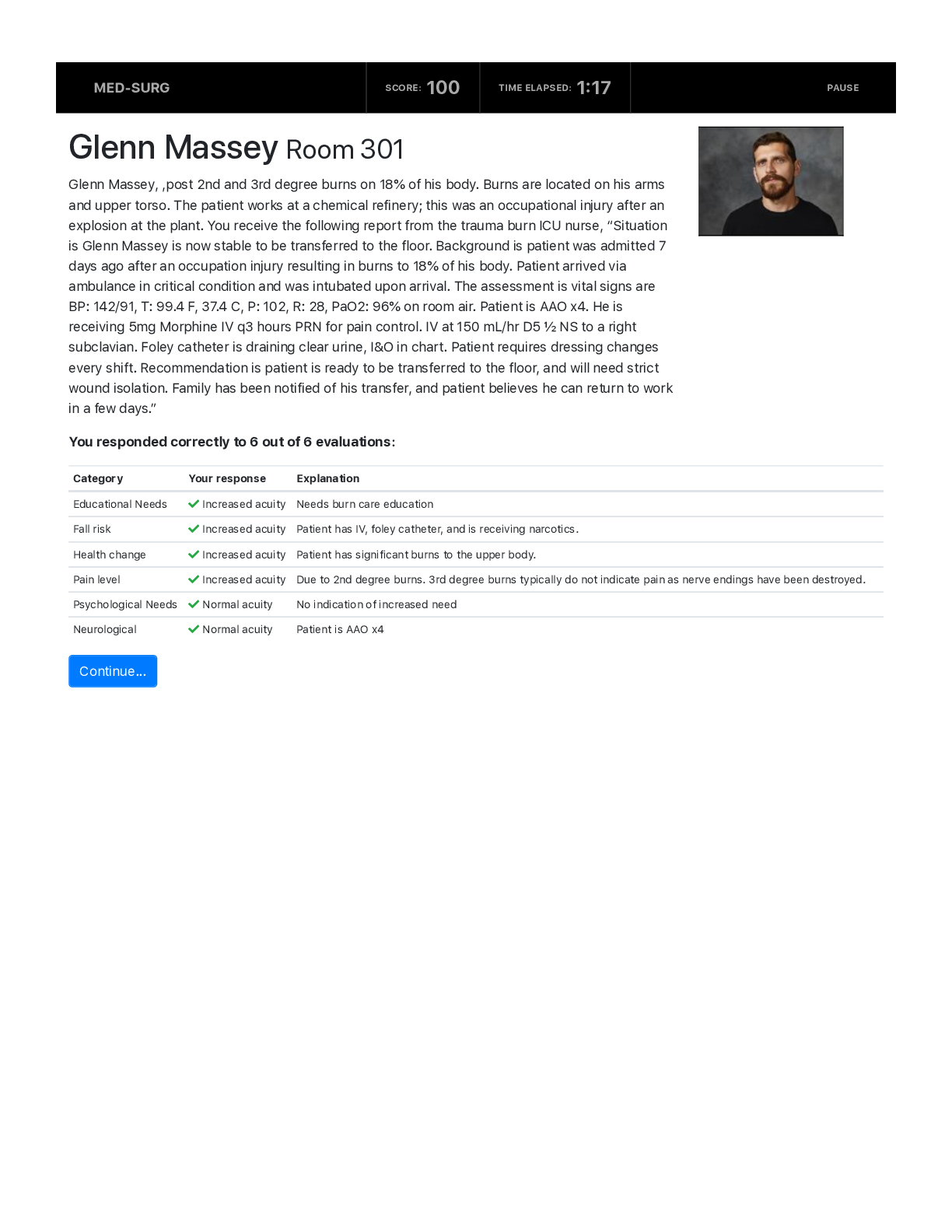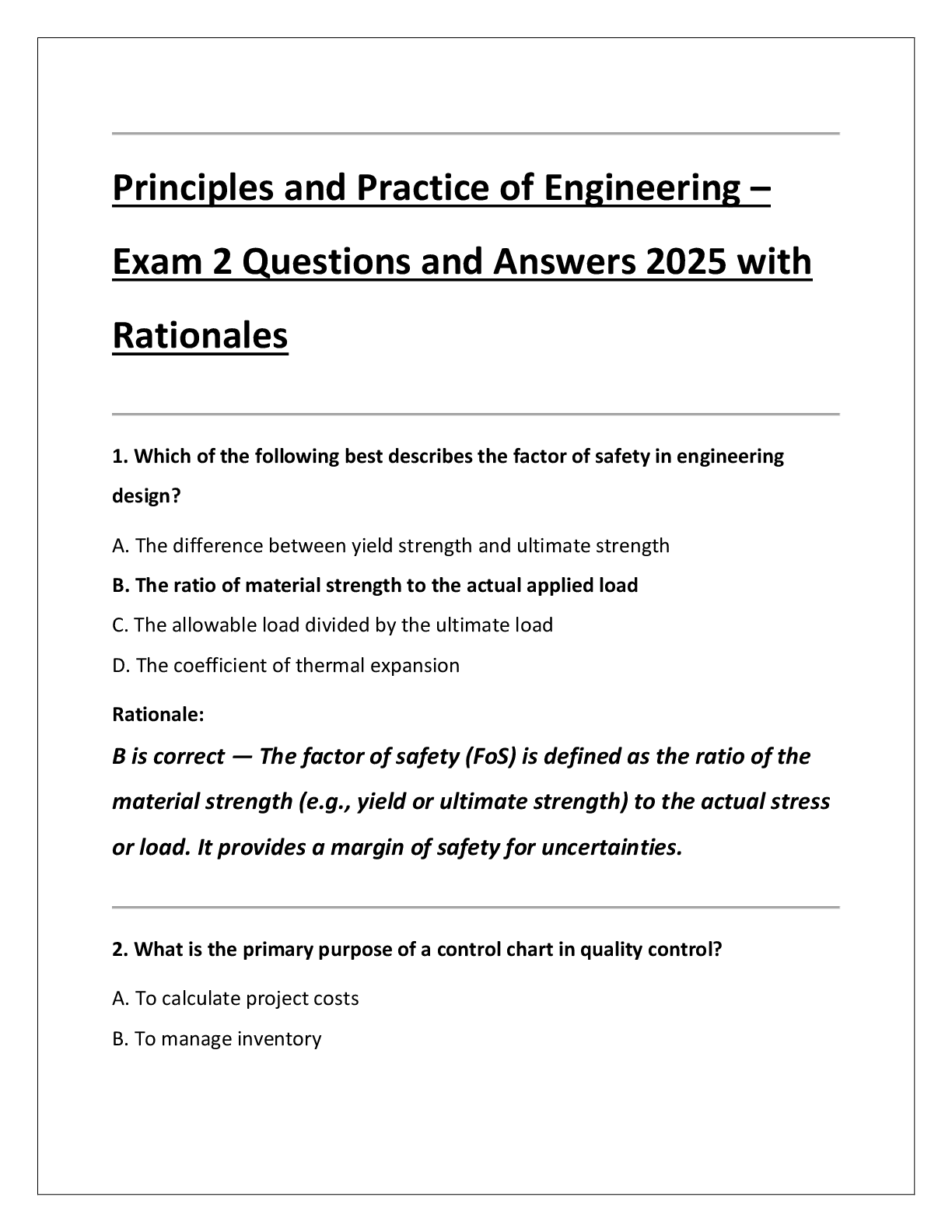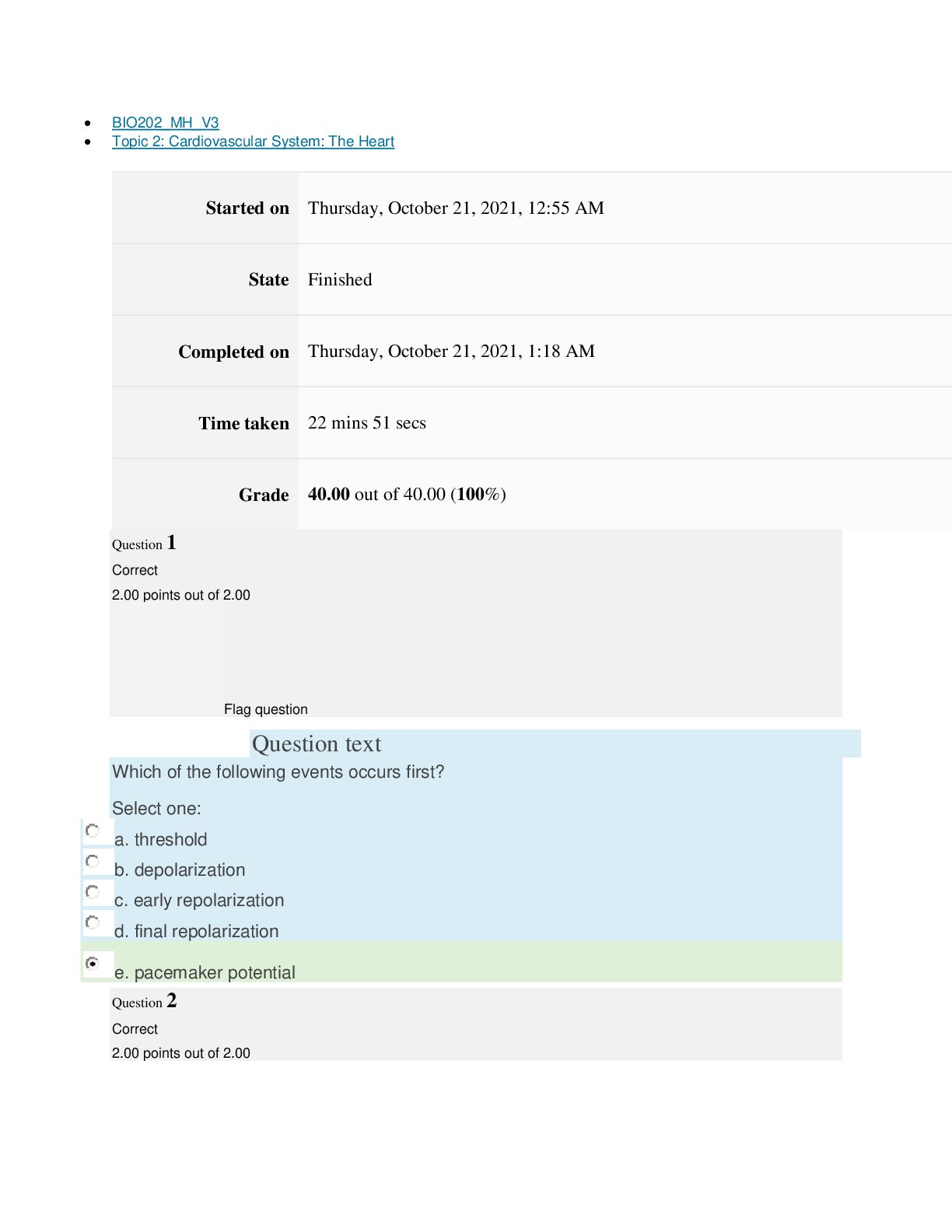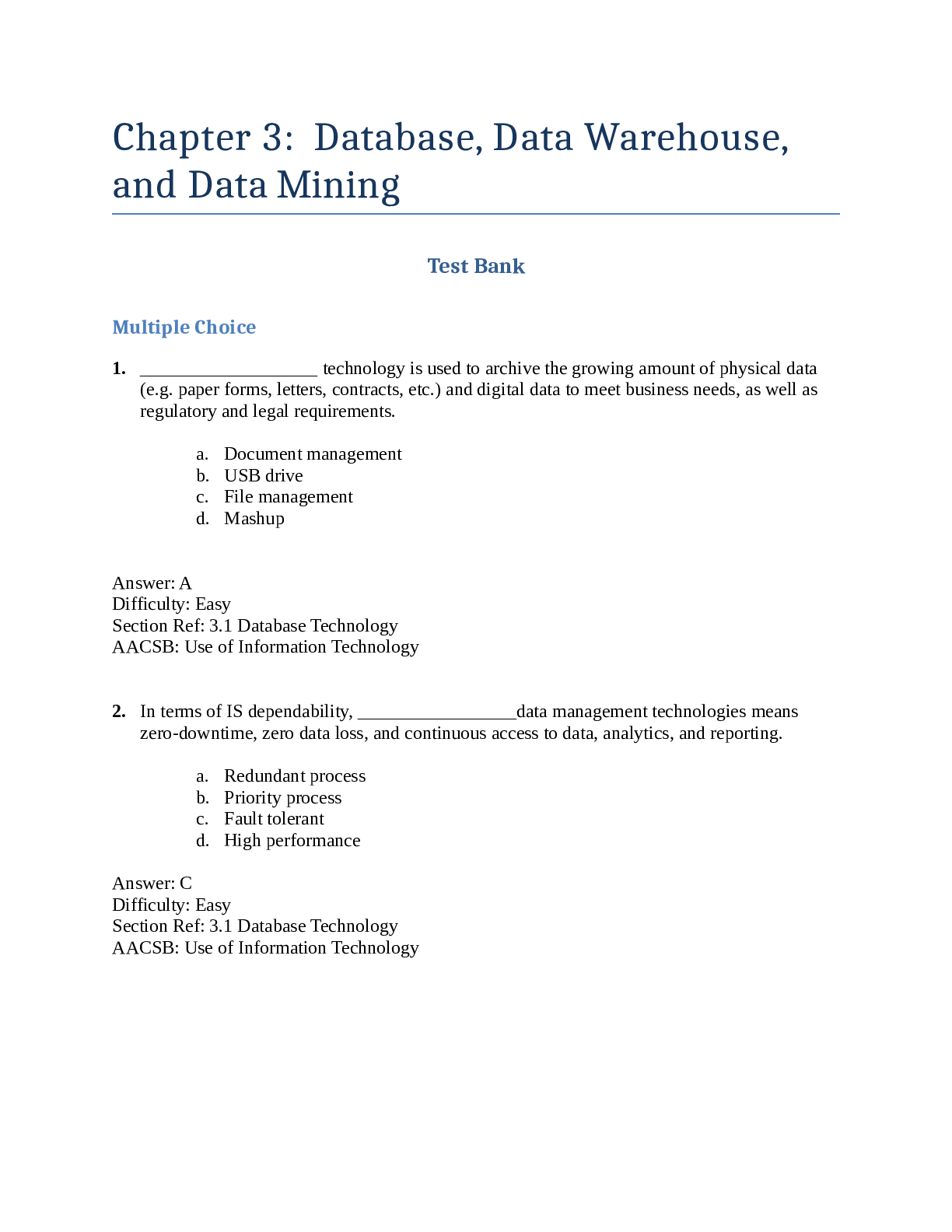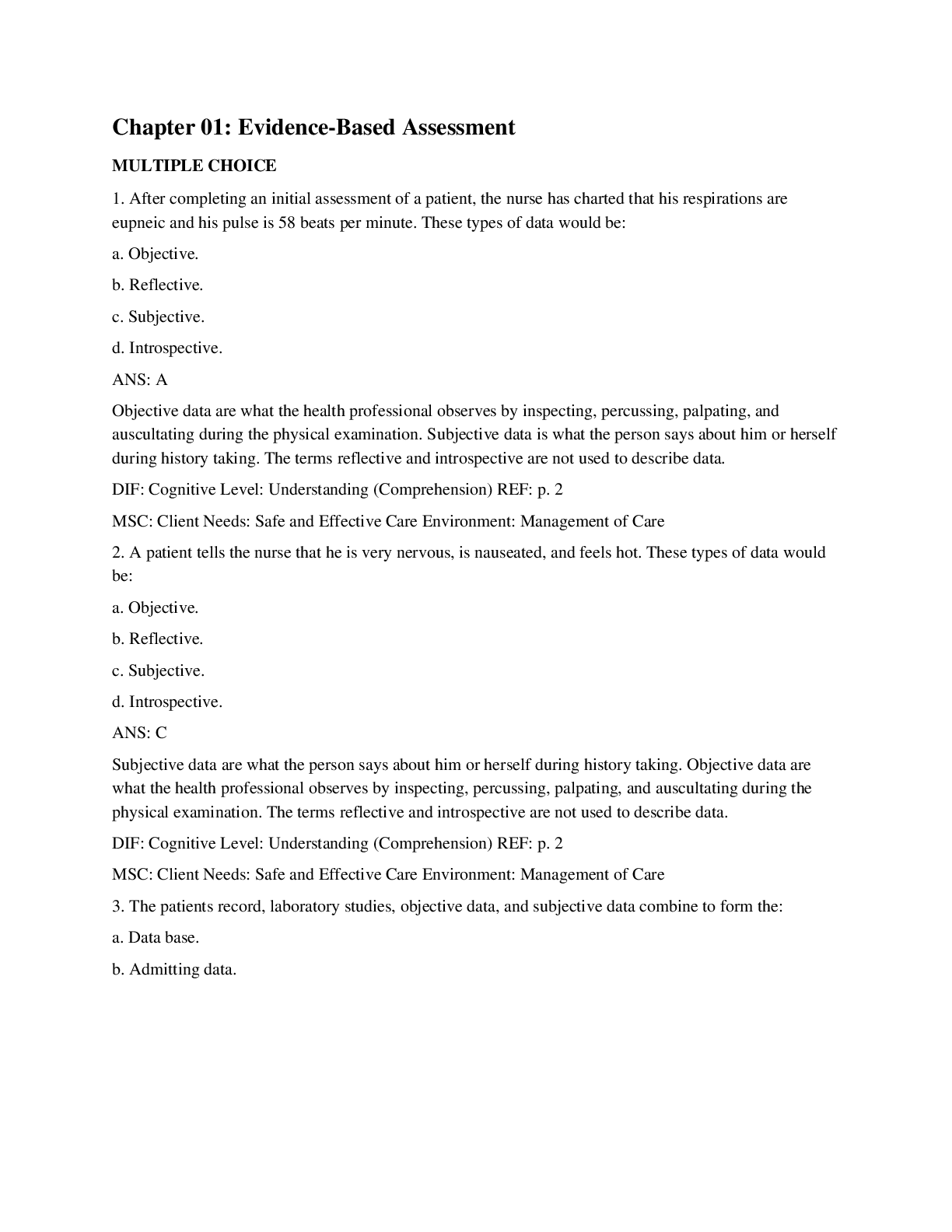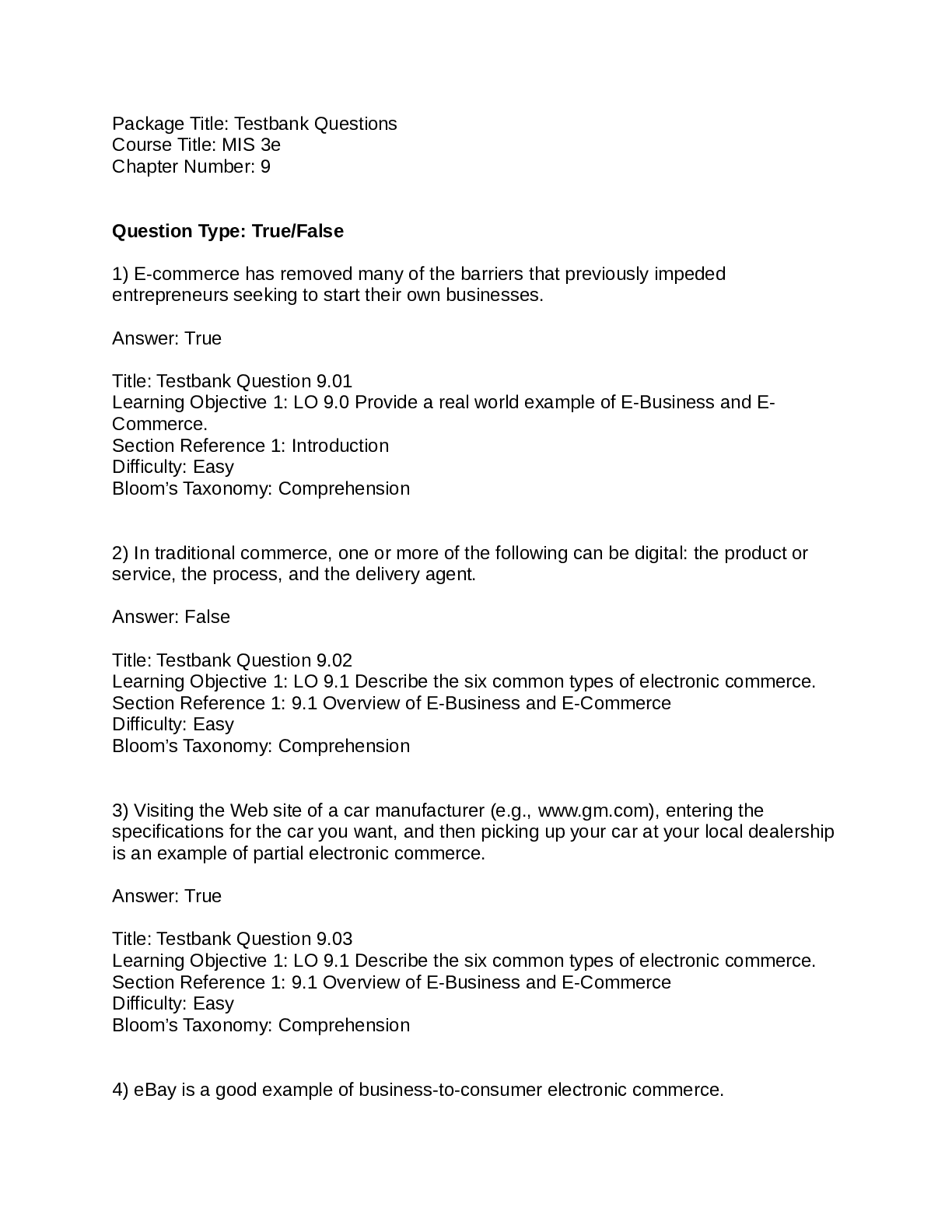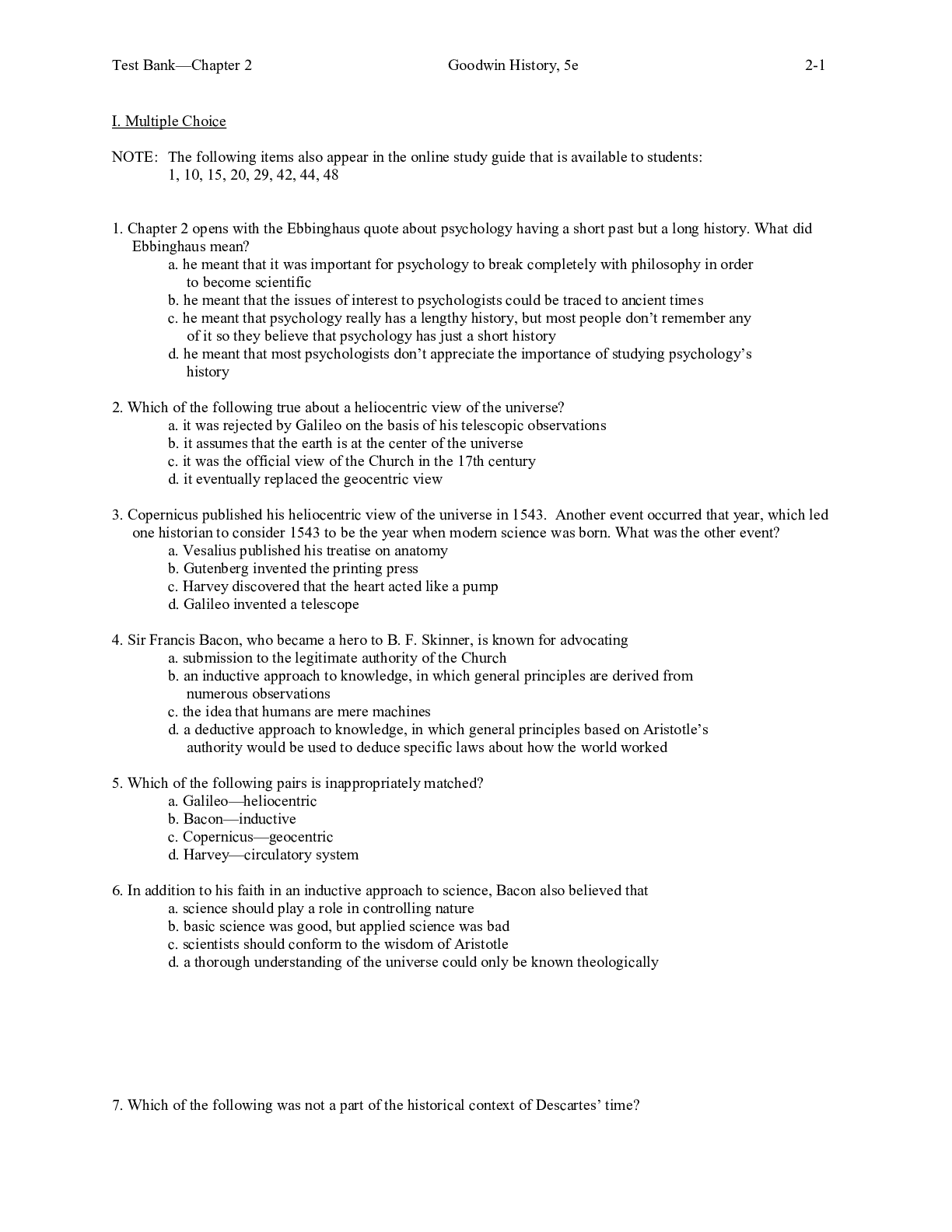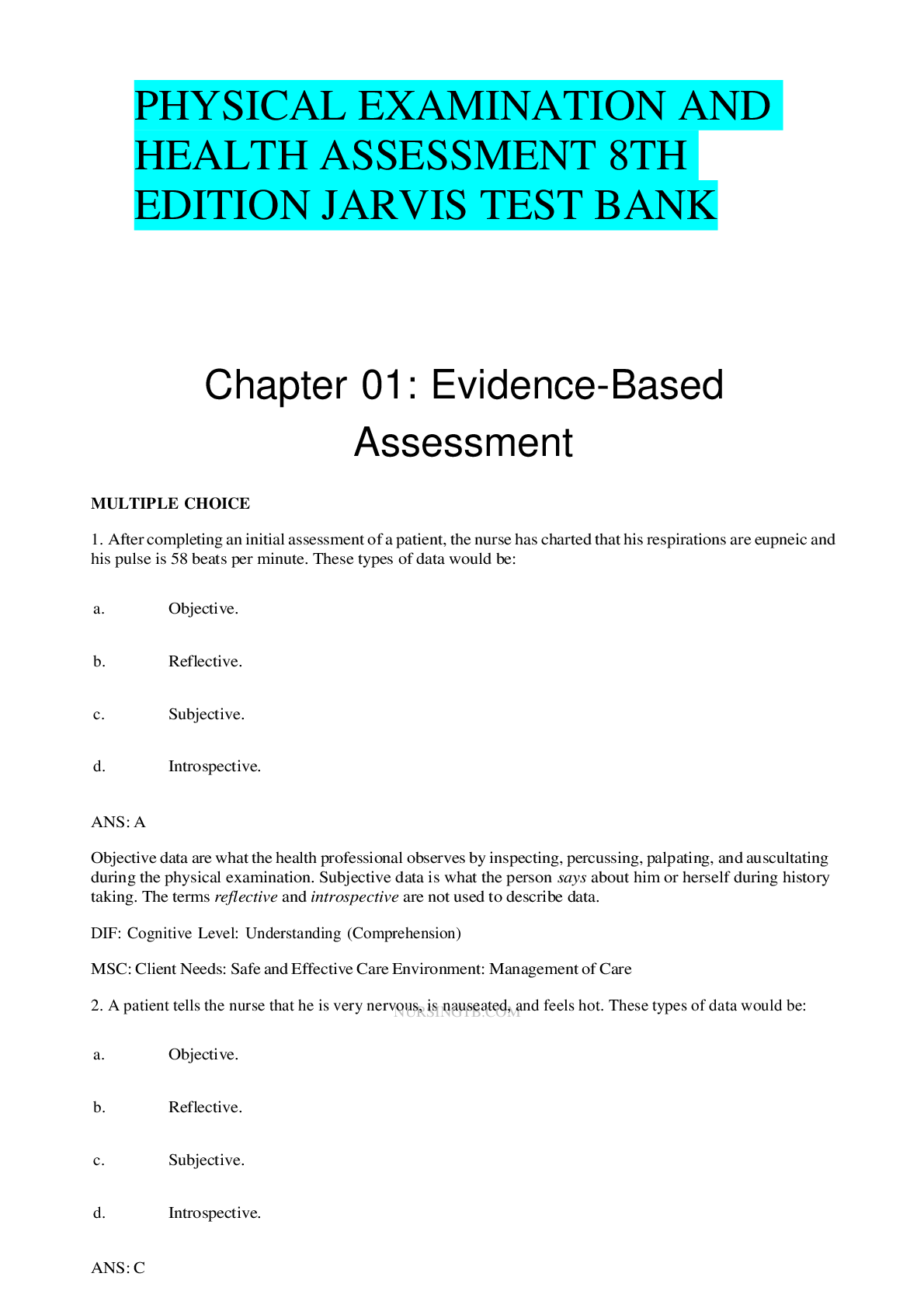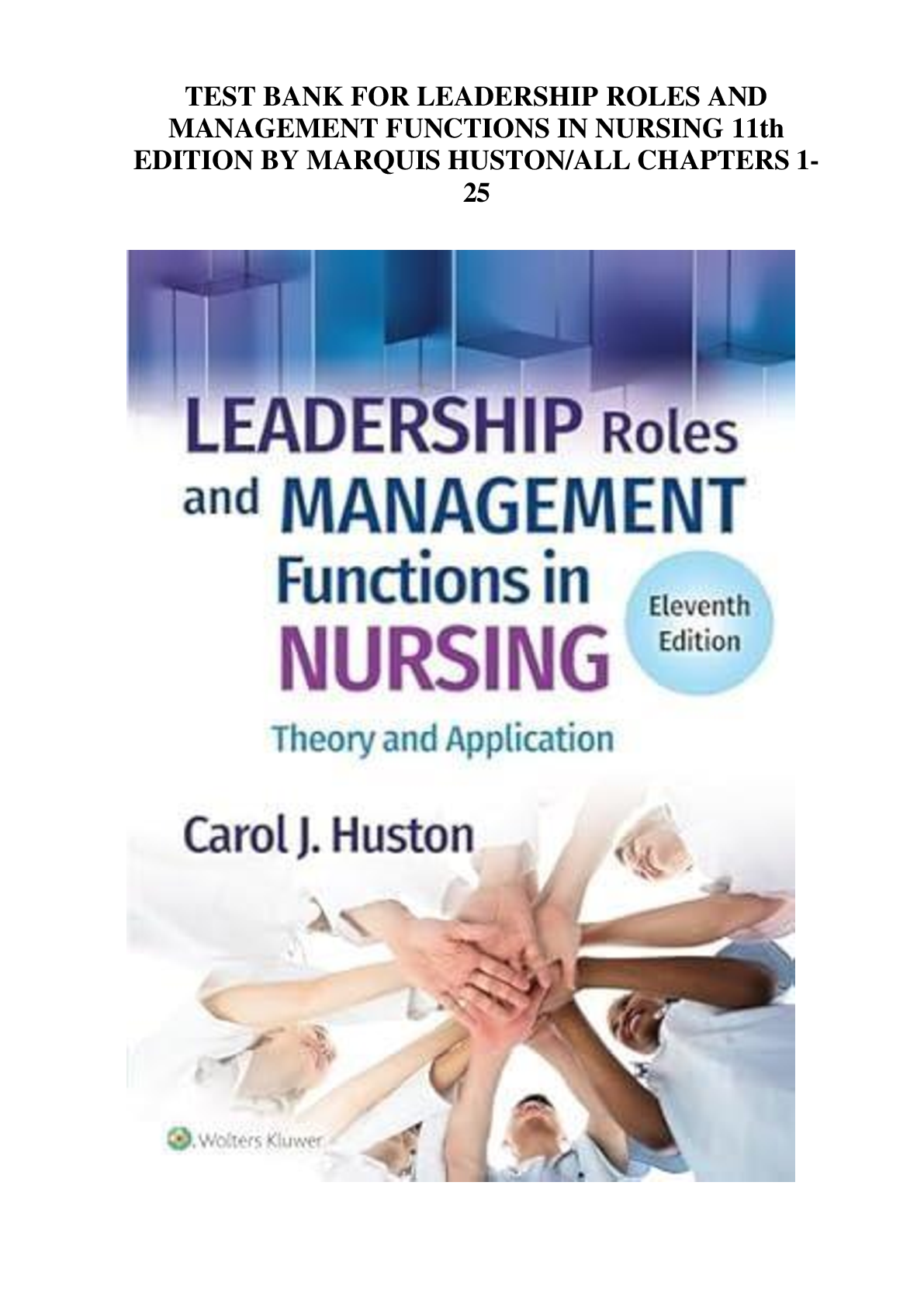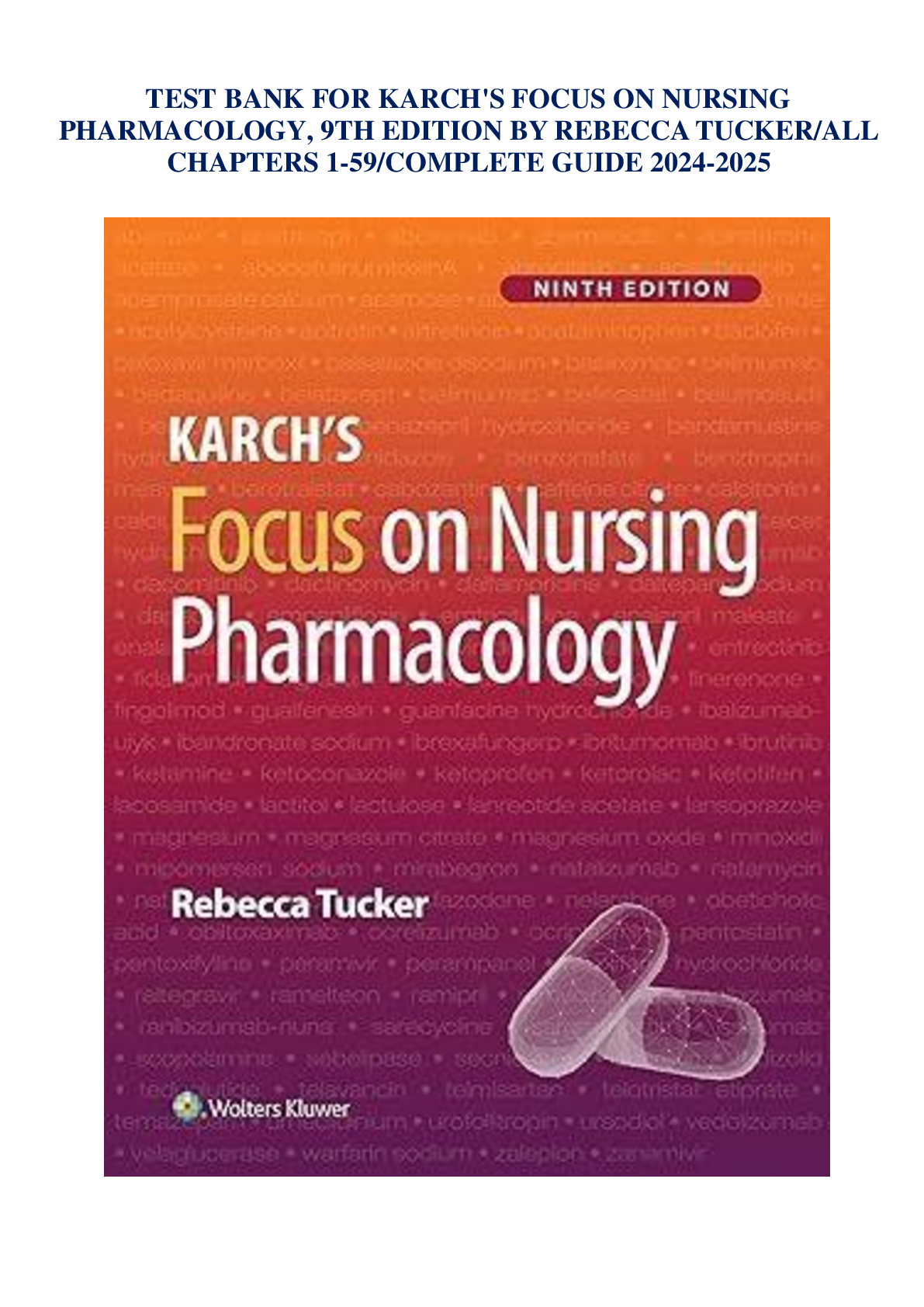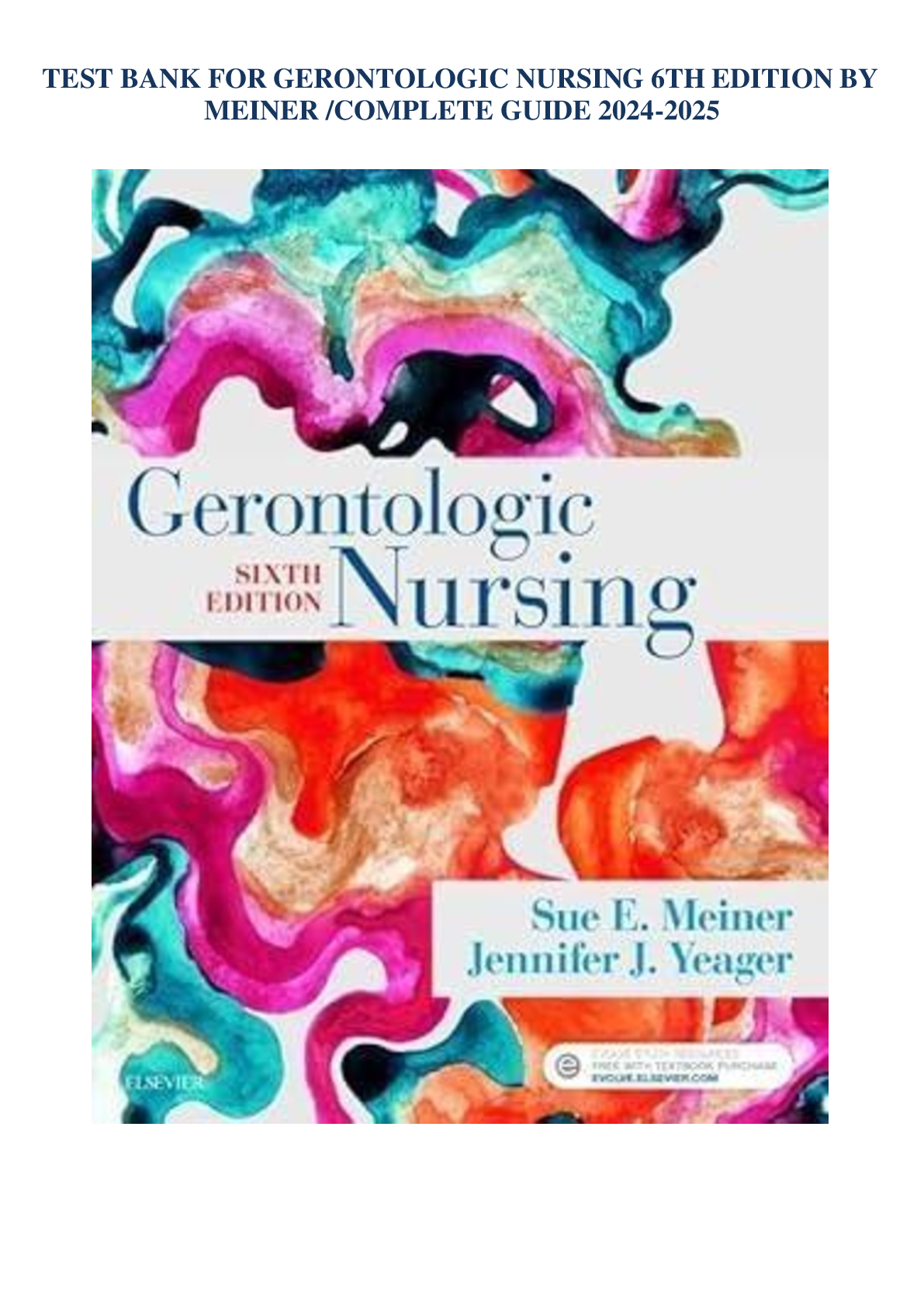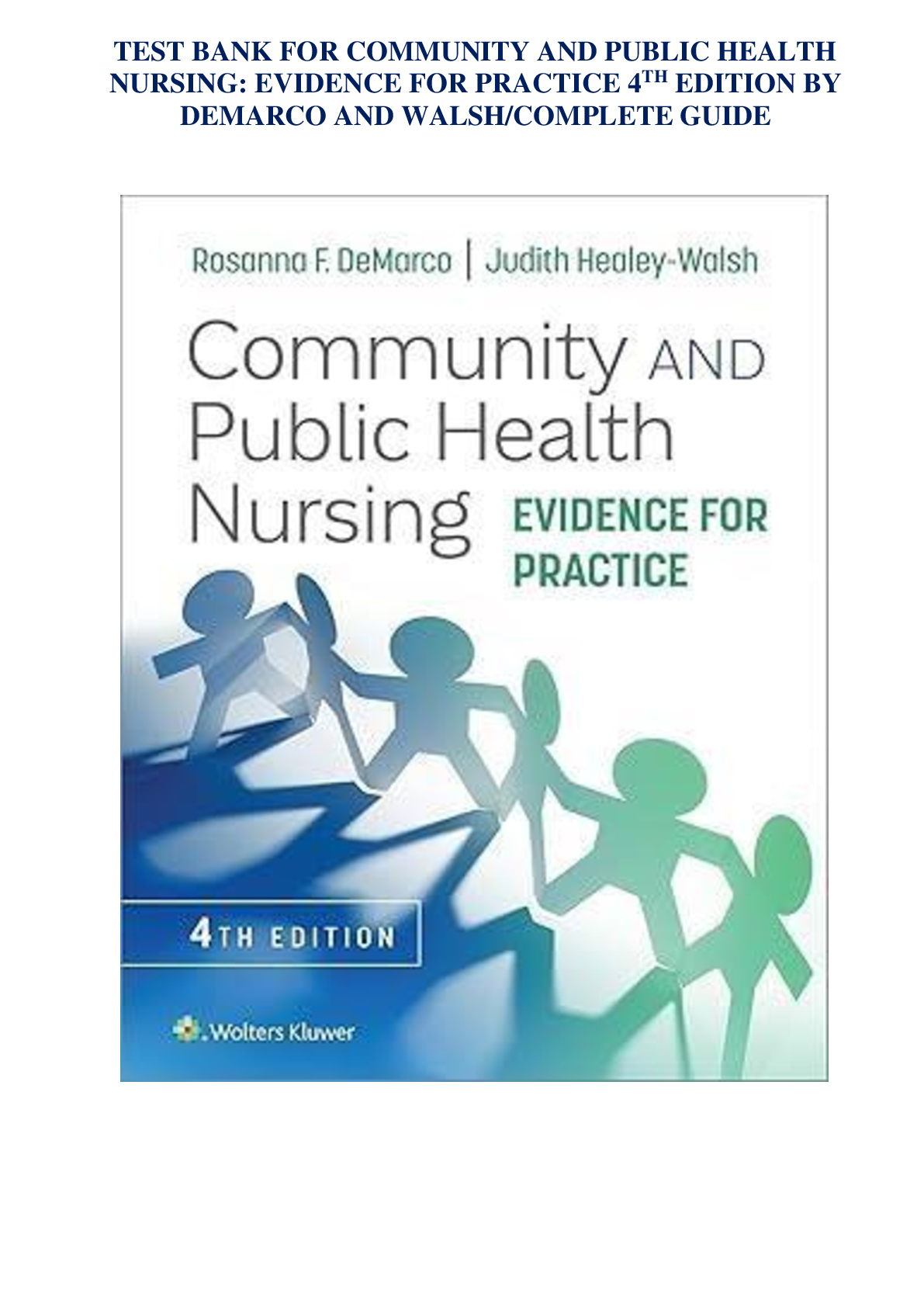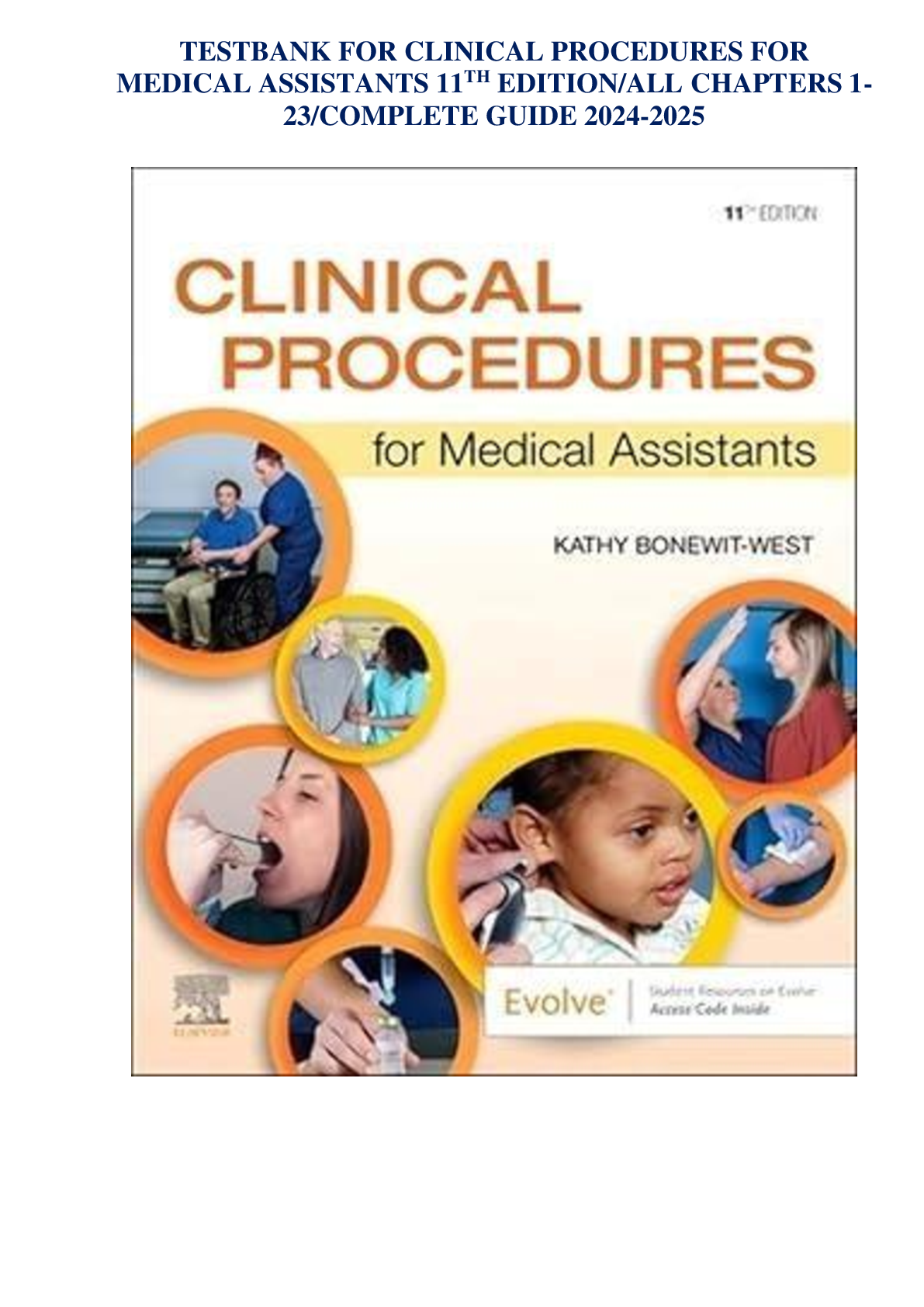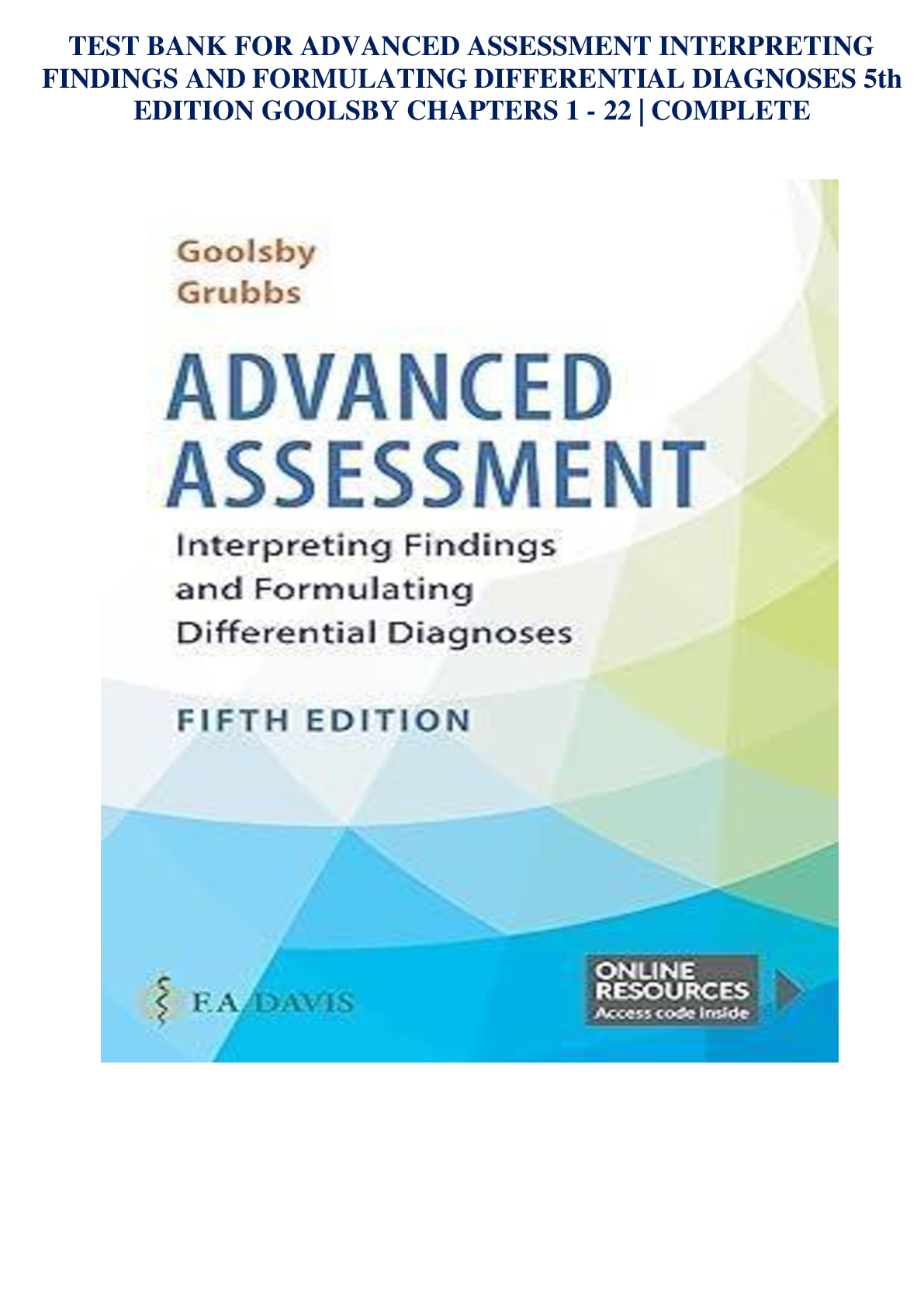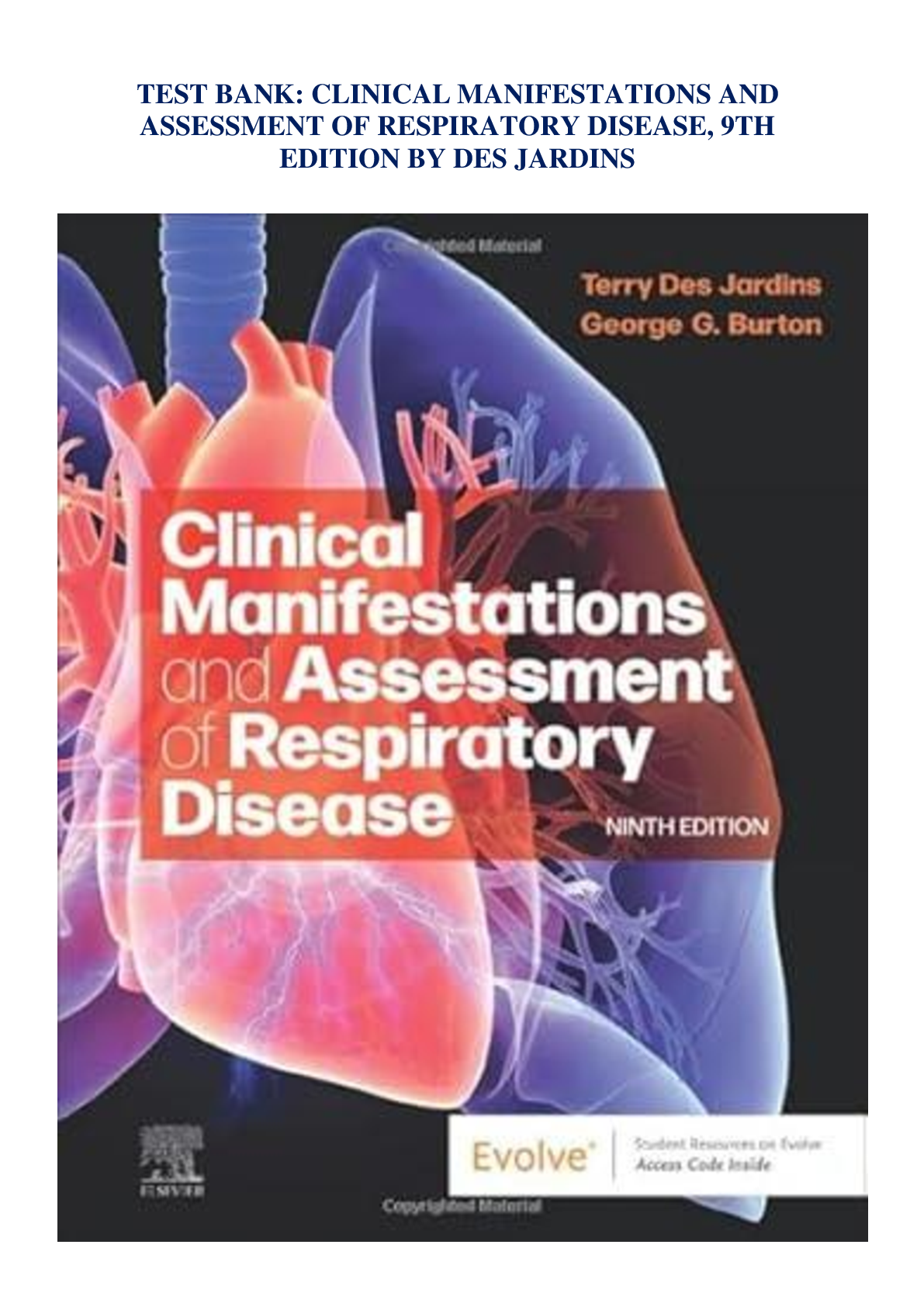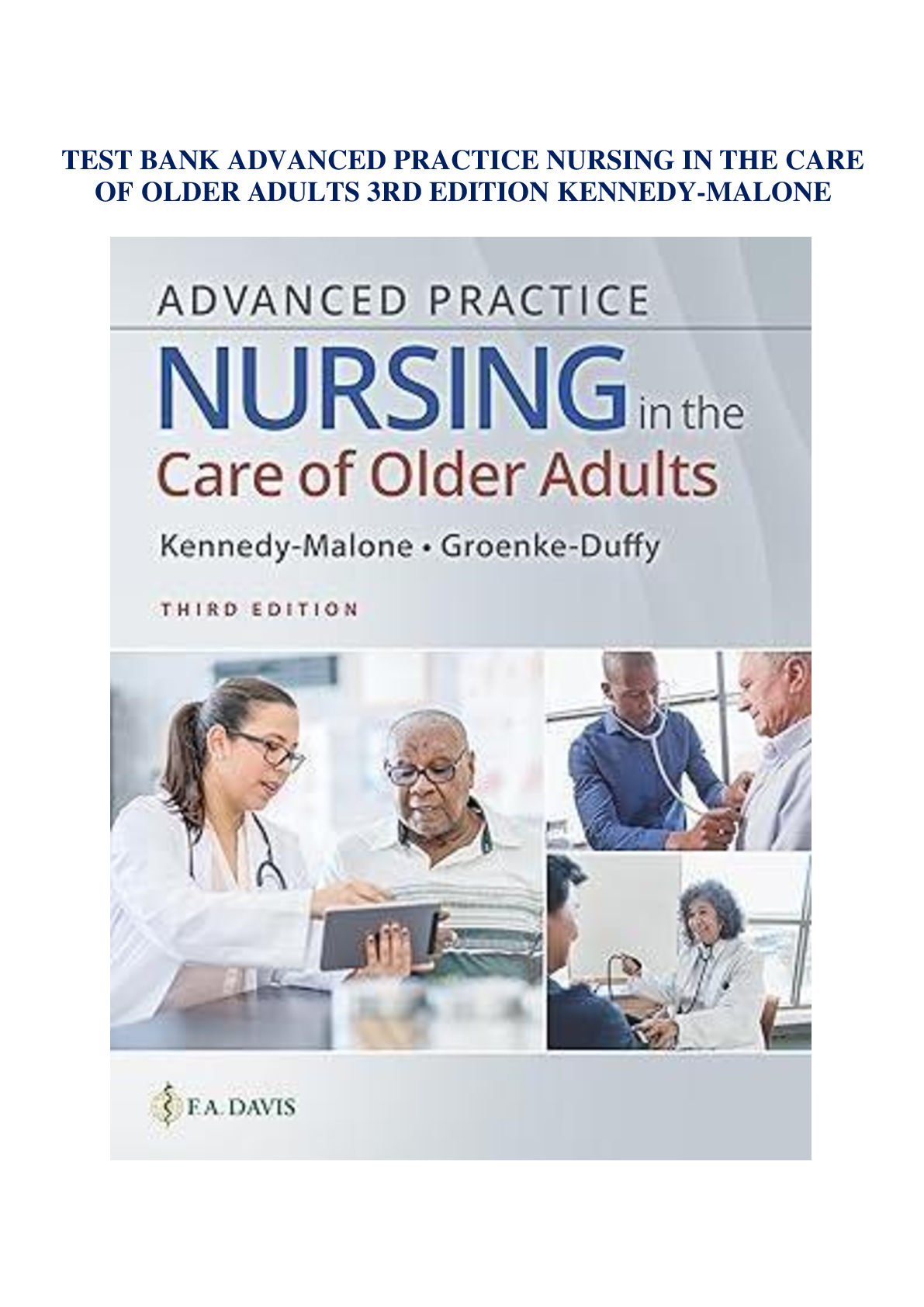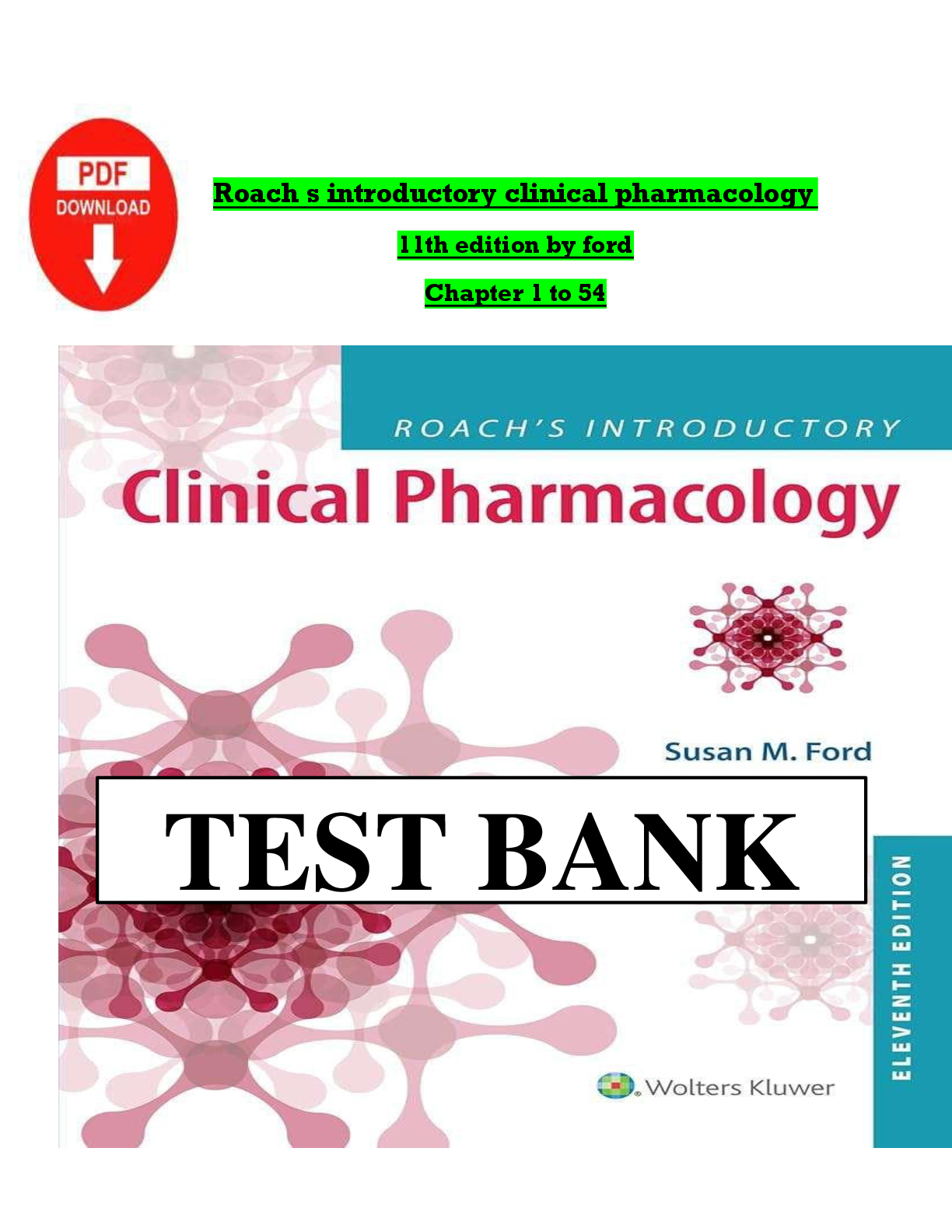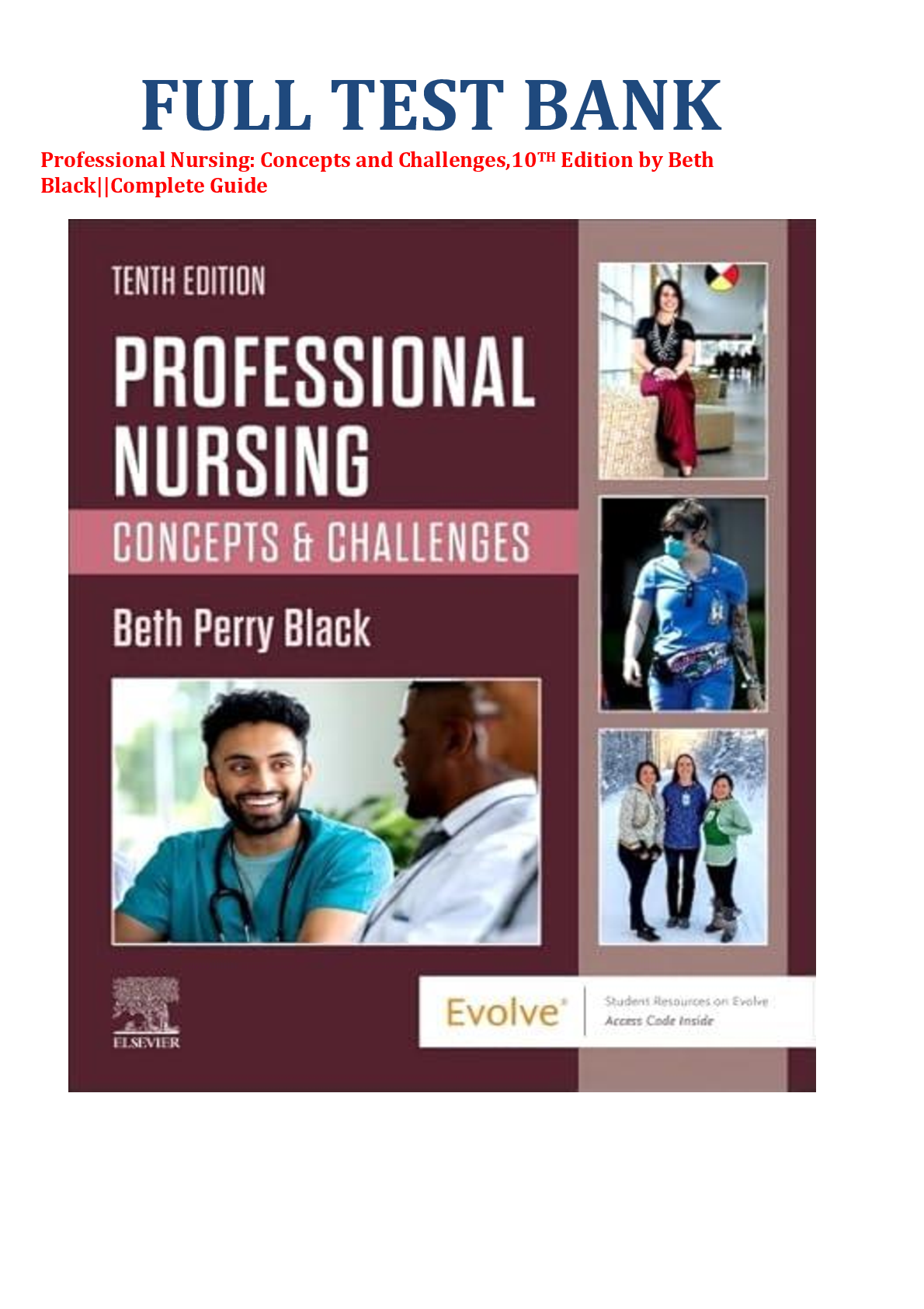ECE 660 Chapter 3: Database, Data Warehouse, and Data Mining Test Bank
Document Content and Description Below
ECE 660 Chapter 3: Database, Data Warehouse,
and Data Mining
Test Bank
Multiple Choice
1. ___________________ technology is used to archive the growing amount of physical data
(e.g. paper forms
...
, letters, contracts, etc.) and digital data to meet business needs, as well as
regulatory and legal requirements.
a. Document management
b. USB drive
c. File management
d. Mashup
Answer: A
Difficulty: Easy
Section Ref: 3.1 Database Technology
AACSB: Use of Information Technology
2. In terms of IS dependability, _________________data management technologies means
zero-downtime, zero data loss, and continuous access to data, analytics, and reporting.
a. Redundant process
b. Priority process
c. Fault tolerant
d. High performance
Answer: C
Difficulty: Easy
Section Ref: 3.1 Database Technology
AACSB: Use of Information Technology
3. __________________ refers to an organization’s ability to get information to the people who
need it to make decisions or react appropriately to business events.
a. Business Intelligence
b. Operational intelligence
c. Information Accessibility
d. Information Fluidity
Answer: B
Difficulty: Easy
Section Ref: 3.1 Database Technology
AACSB: Use of Information Technology
4. An ad-hoc request for specific data or information from a database or warehouse is called
a(n) ___________.
a. Report
b. Analysis
c. Digest
d. Query
Answer: D
Difficulty: Easy
Section Ref: 3.1 Database Technology
AACSB: Use of Information Technology
5. Databases are optimized for extremely fast processing of ____________—or ad hoc user
requests for specific data.
a. Reports
b. Decision support
c. Queries
d. Statistical analysis
Answer: C
Difficulty: Easy
Section Ref: 3.1 Database Technology
AACSB: Use of Information Technology
3. __________________ refers to an organization’s ability to get information to the people who
need it to make decisions or react appropriately to business events.
a. Business Intelligence
b. Operational intelligence
c. Information Accessibility
d. Information Fluidity
Answer: B
Difficulty: Easy
Section Ref: 3.1 Database Technology
AACSB: Use of Information Technology
4. An ad-hoc request for specific data or information from a database or warehouse is called
a(n) ___________.
a. Report
b. Analysis
c. Digest
d. Query
Answer: D
Difficulty: Easy
Section Ref: 3.1 Database Technology
AACSB: Use of Information Technology
5. Databases are optimized for extremely fast processing of ____________—or ad hoc user
requests for specific data.
a. Reports
b. Decision support
c. Queries
d. Statistical analysis
Answer: C
Difficulty: Easy
Section Ref: 3.1 Database Technology
AACSB: Use of Information Technology
6. Many database management systems use the ______________________ for programming
queries.
a. Syntax Query Language (SQL)
b. Structured Query Language (SQL)
c. Statistical Query Language (SQL)
d. Standard Query Language (SQL)
Answer: B
Difficulty: Easy
Section Ref: 3.1 Database Technology
AACSB: Use of Information Technology
7. Data generated by business apps, sensors, and transaction processing systems (TPS) are
typically stored first in a ______________.
a. Database
b. Data warehouse
c. Data mart
d. Data silo
Answer: A
Difficulty: Easy
Section Ref: 3.1 Database Technology
AACSB: Use of Information Technology
8. _______________________ integrate data from multiple databases and data silos and
organize them for complex analysis, knowledge discovery, and to support decision making.
a. Databases
b. Data warehouses
c. Data collectors
d. Data silos
Answer: B
Difficulty: Easy
Section Ref: 3.1 Database Technology
AACSB: Use of Information Technolog
9. Data warehouses and data marts are optimized for all of the following except:
a. OLTP – Online Transaction Processing
b. Data mining
c. Business Intelligence (BI)
d. Decision support
Answer: A
Difficulty: Medium
Section Ref: 3.1 Database Technology
AACSB: Use of Information Technology
10. _________________ are small-scale data warehouses that support a single function or
department.
a. Databases
b. Data warehouses
c. Data marts
d. Data silos
Answer: C
Difficulty: Easy
Section Ref: 3.1 Database Technology
AACSB: Use of Information Technology
11. _____________________ tools and techniques process data and do statistical analysis for
insight and discovery—that is, to discover meaningful relationships in the data, keep
informed of real time, gain insight, detect trends, and identify opportunities and risks.
a. Metric analysis
b. Market research
c. Business intelligence (BI)
d. Pattern recognition
Answer: C
Difficulty: Easy
Section Ref: 3.1 Database Technology
AACSB: Use of Information Technology
15. A(n) ________________ stores all related files in one physical location.
a. Centralized database
b. Simple database
c. Static database
d. Analytical database
Answer: A
Difficulty: Easy
Section Ref: 3.1 Database Technology
AACSB: Use of Information Technology
16. The primary benefits of centralized database configuration are better _____________ and
________________.
a. Reports / Statistical Tools
b. Quality / Security
c. Speed / Access
d. Software / Hardware
Answer: B
Difficulty: Hard
Section Ref: 3.1 Database Technology
AACSB: Use of Information Technology
17. The primary disadvantage of centralized database configurations is
a. Data security
b. Data quality
c. Availability of statistical analysis tools
d. Transmission delay when users are geo-dispersed
Answer: D
Difficulty: Hard
Section Ref: 3.1 Database Technology
AACSB: Use of Information Technology
[Show More]
Last updated: 2 years ago
Preview 1 out of 54 pages
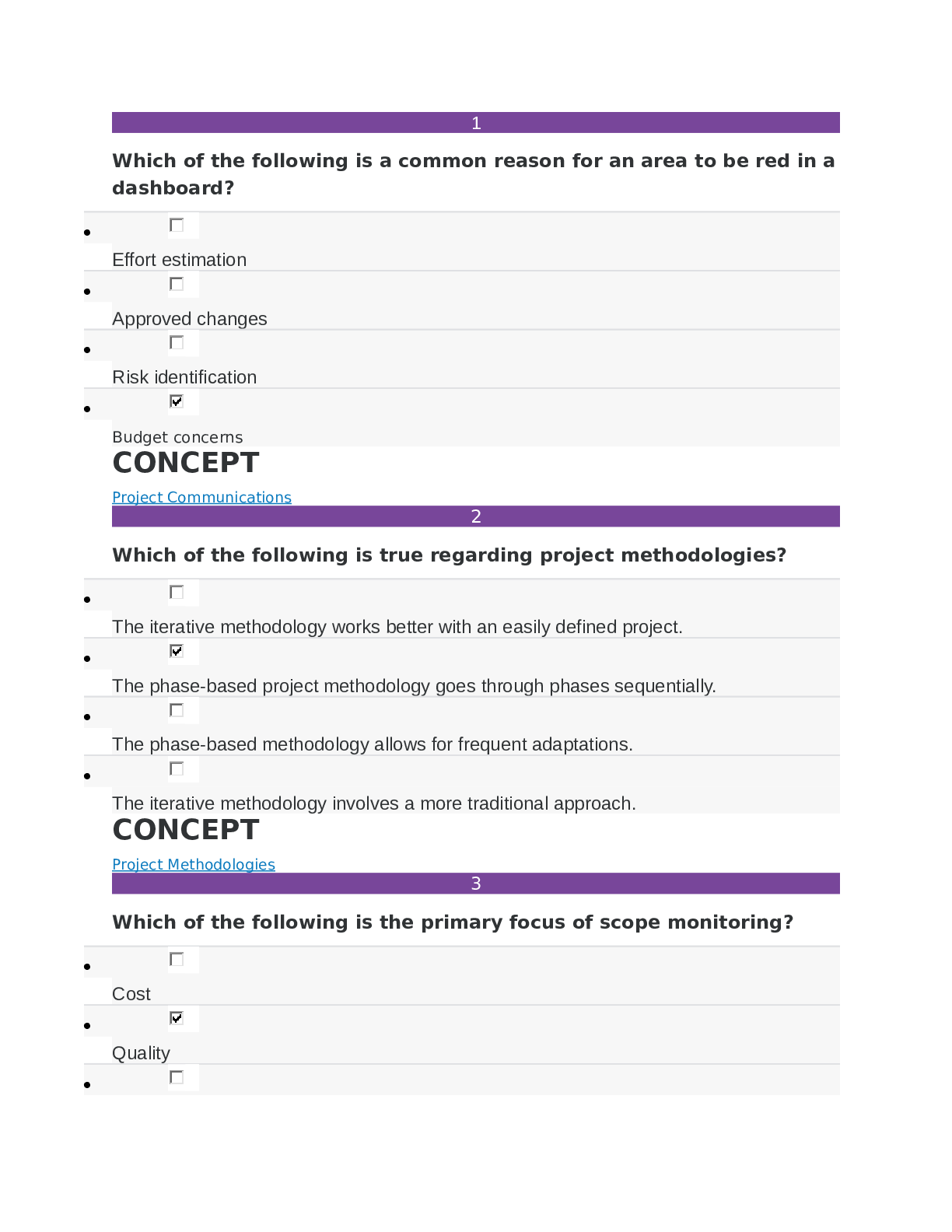
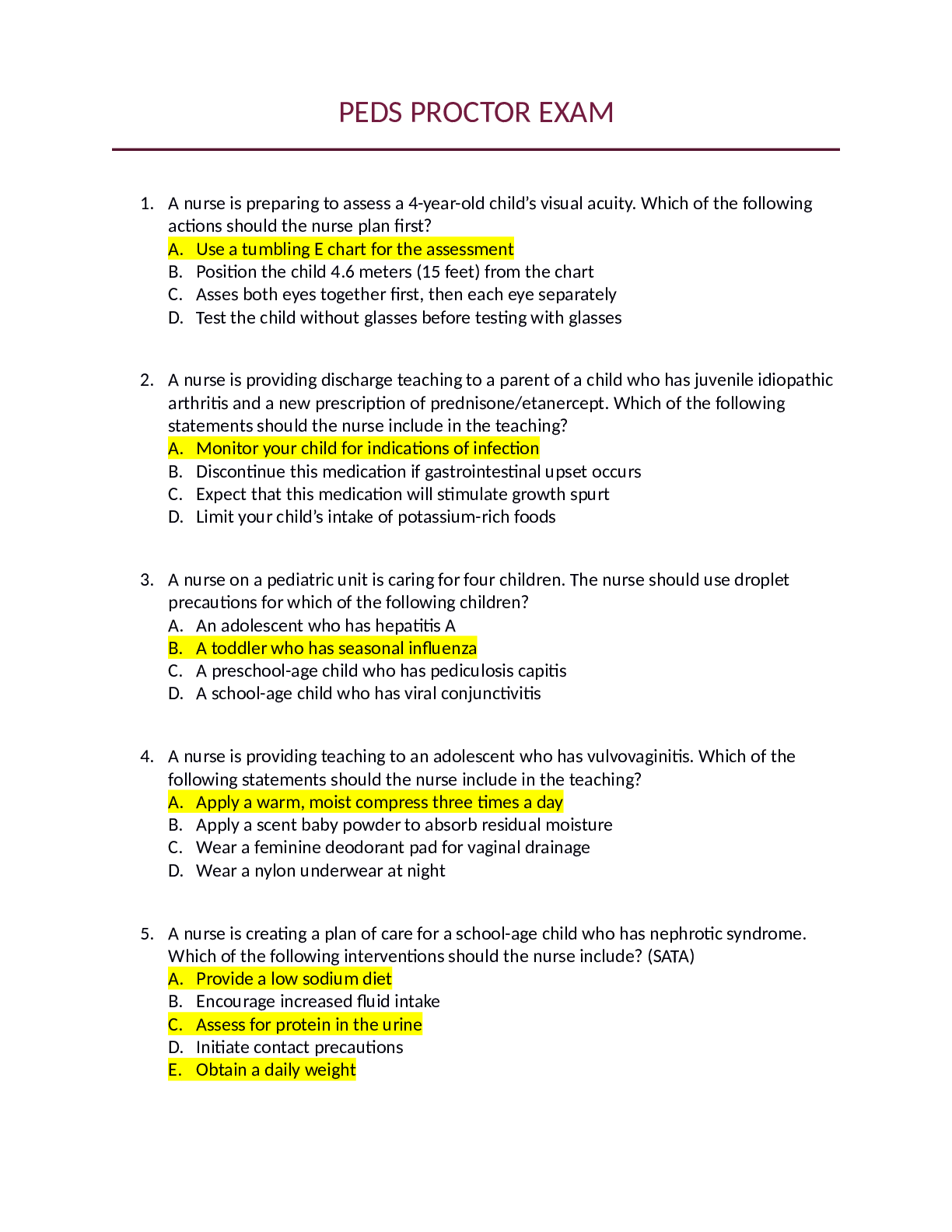

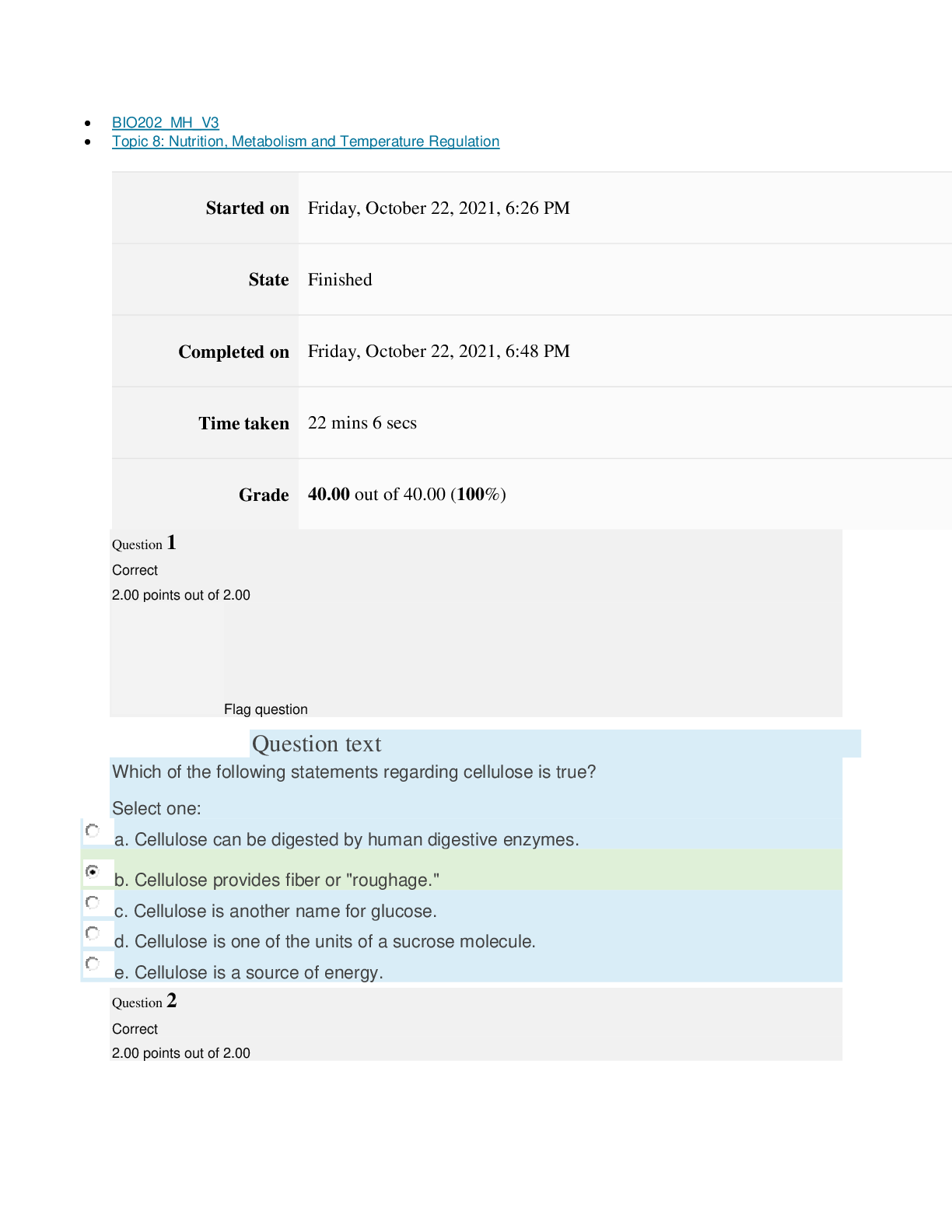

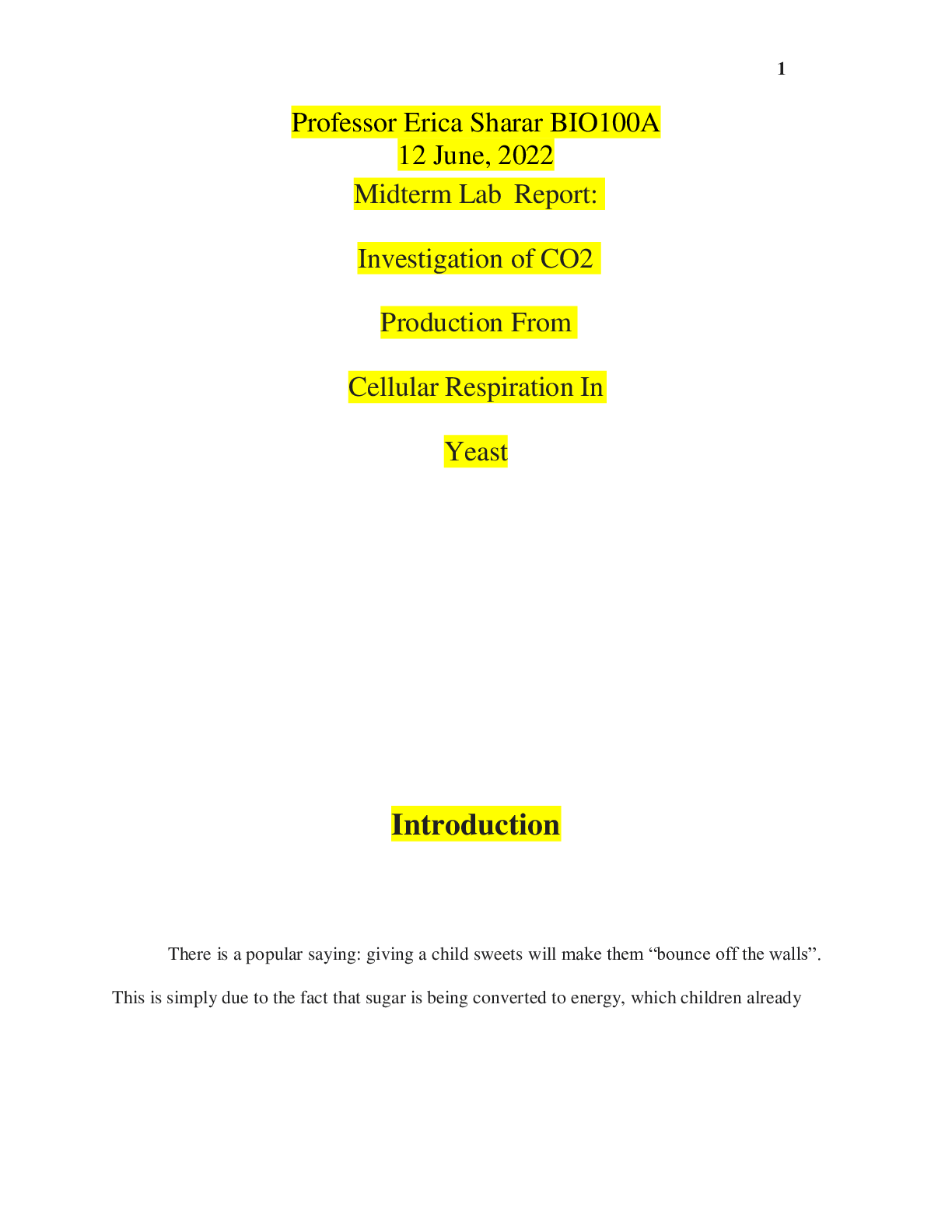
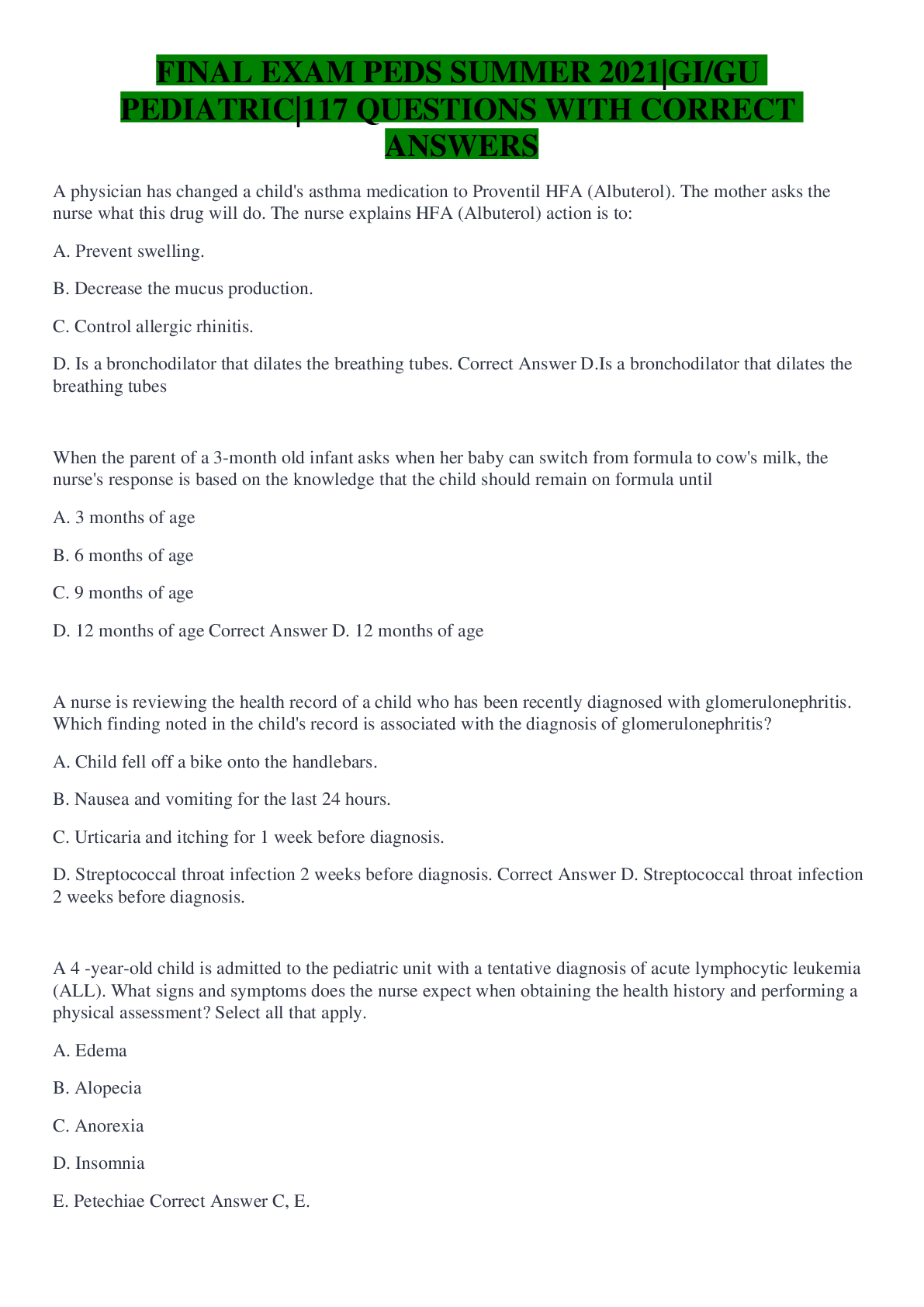

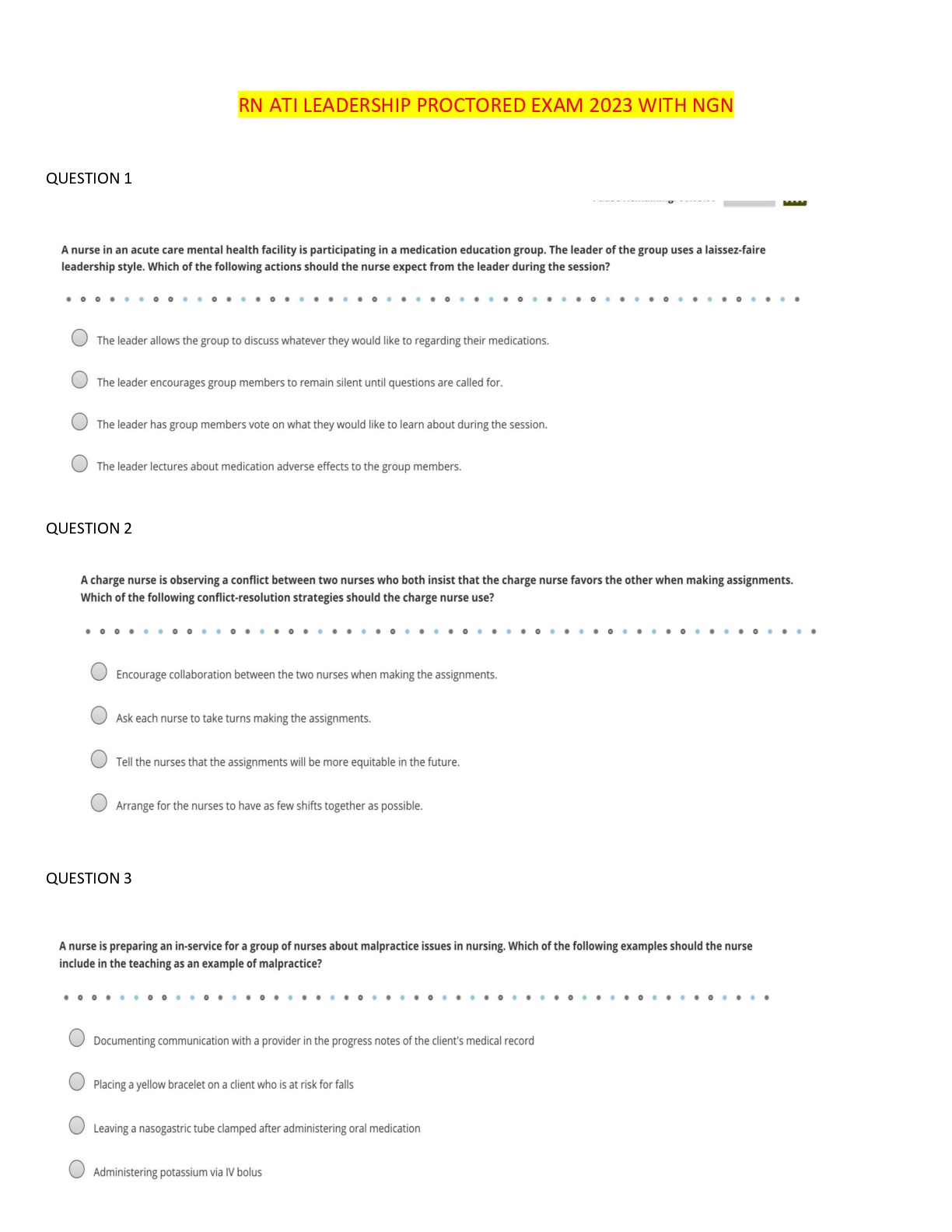


.png)

